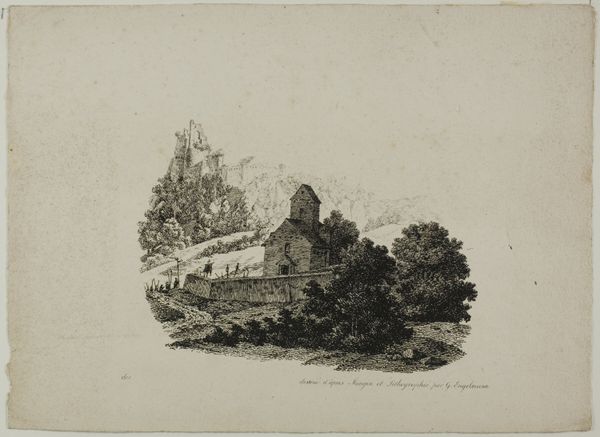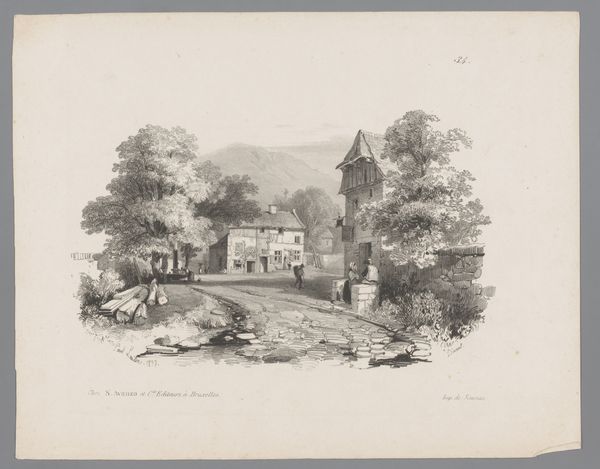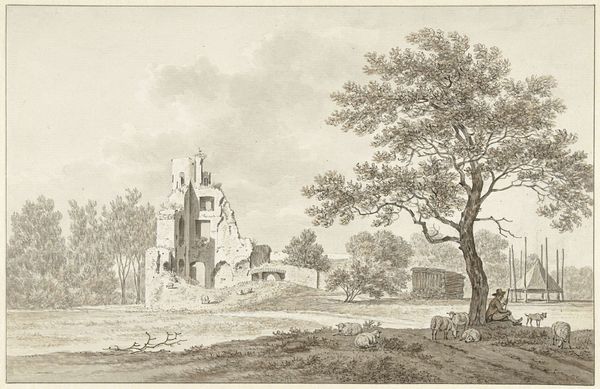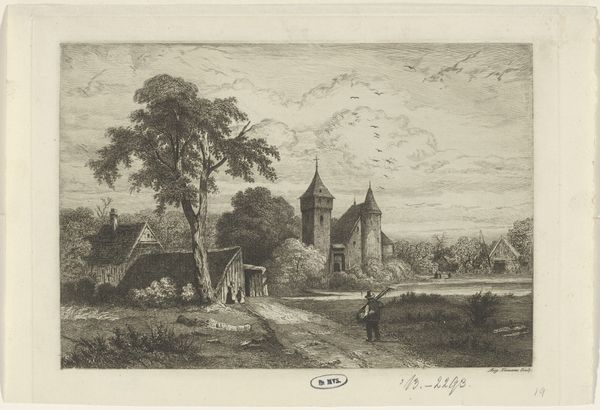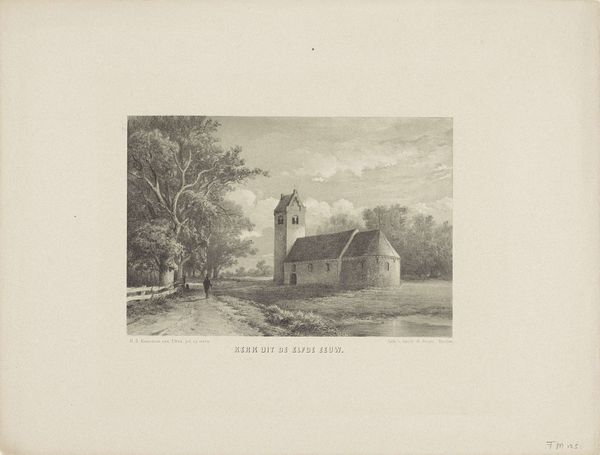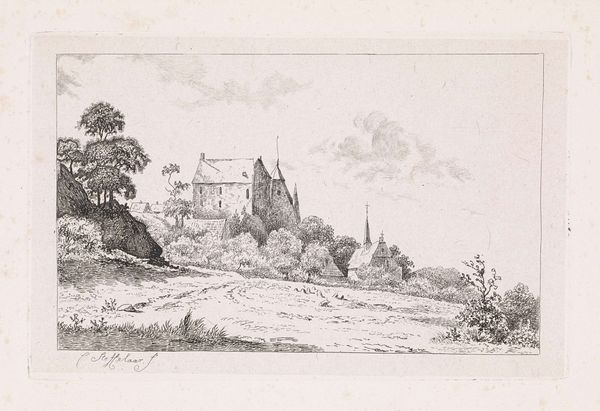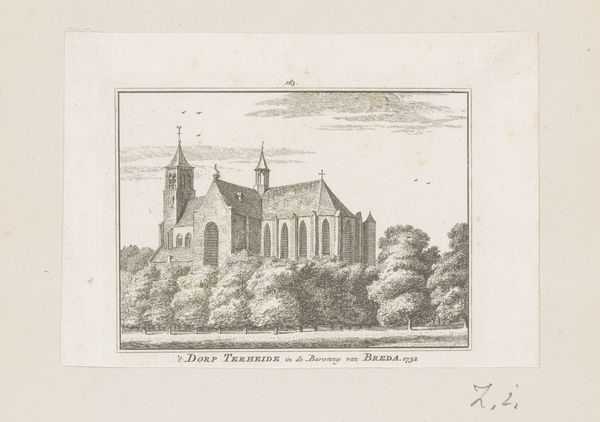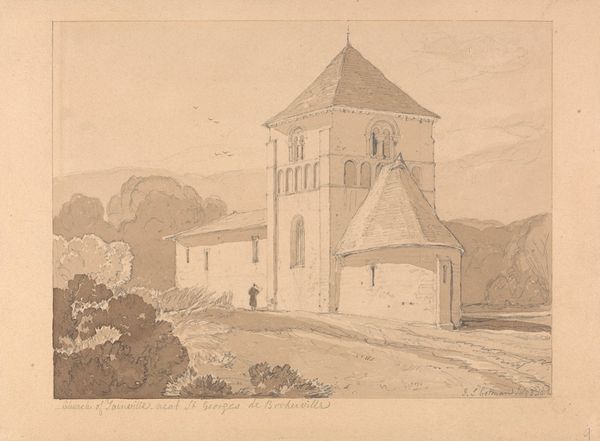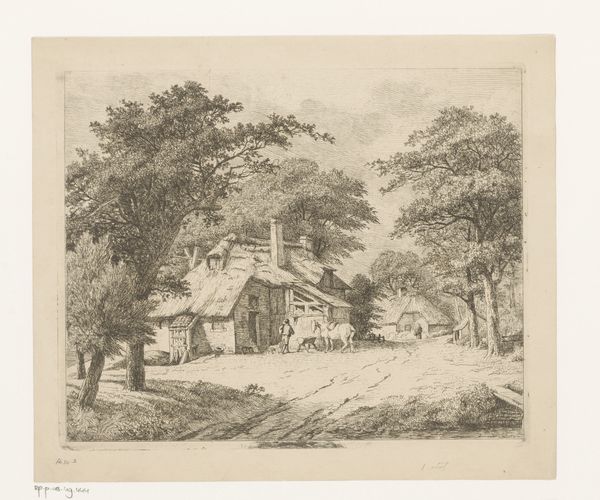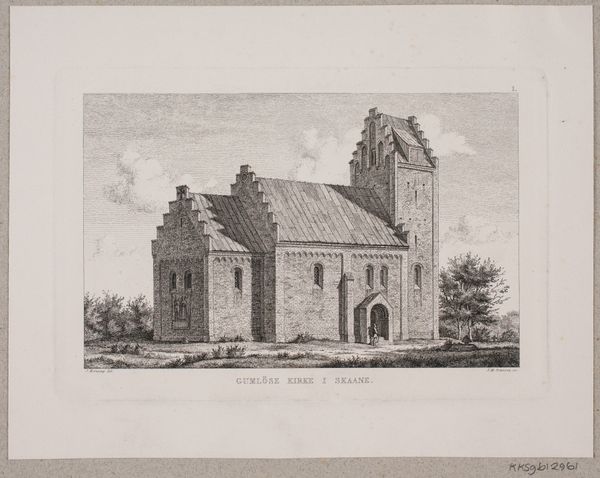
drawing, lithograph, print, etching, paper, pencil
#
drawing
#
lithograph
# print
#
etching
#
landscape
#
paper
#
pencil drawing
#
romanticism
#
pencil
#
history-painting
#
watercolor
Copyright: Public Domain
Editor: Here we have Francis Nicholson’s "Byland Abbey, Yorkshire" from 1821, a lithograph and etching printed with pencil on paper. The subdued tones create such a pensive atmosphere. What story do you think this work is trying to tell? Curator: Well, immediately I consider the role of Romanticism and the fascination with ruins in the early 19th century. Byland Abbey, once a thriving religious center, is now presented in decay. This reflects a broader interest in the passage of time and the impact of historical events, specifically the Dissolution of the Monasteries under Henry VIII, which had huge social and institutional consequences. Do you think Nicholson is simply depicting a pretty landscape? Editor: Not at all, the abbey’s skeletal remains feel very deliberate, especially with the tiny figures nearby, seemingly oblivious to the weight of history. I'm wondering, did Nicholson choose this particular viewpoint to make a specific comment about the Church’s place in society? Curator: Precisely! Artists like Nicholson were increasingly conscious of art's power to shape public perceptions of historical and cultural sites. He probably intended viewers to contemplate not just the aesthetic beauty of the ruin, but the social forces that led to its demise. Editor: So the choice of rendering, the figures, the ruins, it all feeds into this bigger commentary about power? Curator: Exactly. Romanticism engaged heavily with this nostalgia of medievalism. The Abbey became a symbol ripe for many interpretations based on people’s feelings of that current time, reflecting changing views on institutions. Editor: That gives me a lot to think about. It’s more than just an image of an old abbey; it is about historical perception!
Comments
No comments
Be the first to comment and join the conversation on the ultimate creative platform.
